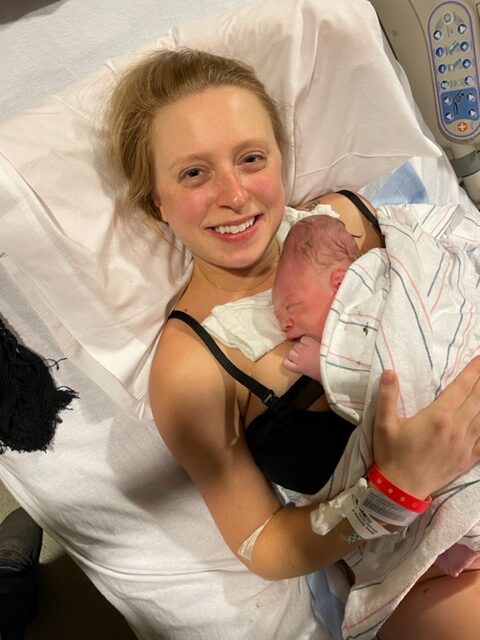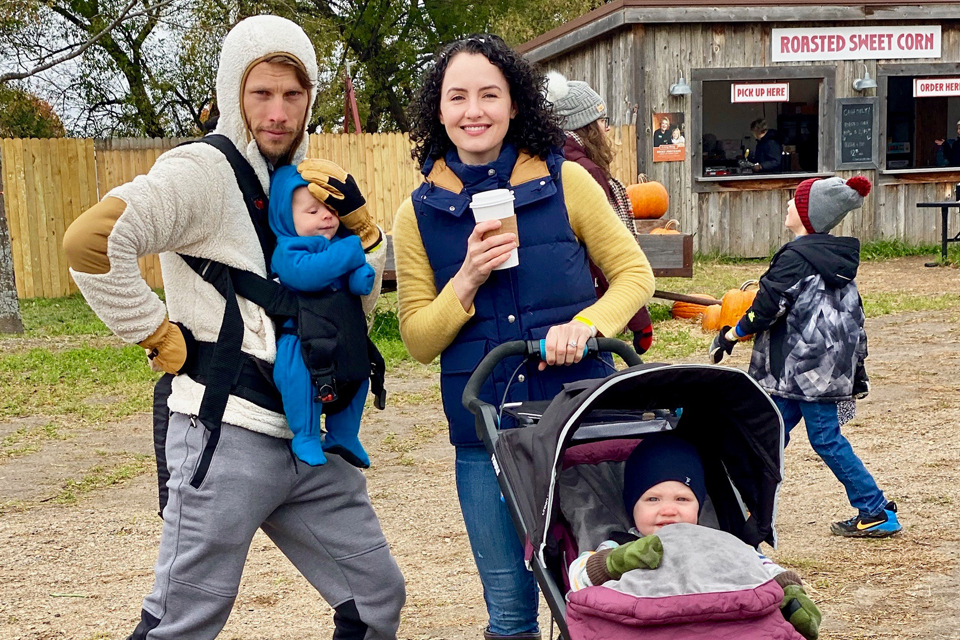Photo by Raven Ivory
Are you wondering how to decide about Placenta Encapsulation for your birth? What are the benefits of placenta encapsulation? And what is actually involved in the process? Get the answers from Midwest Doulas’ resident Certified Placenta Encapsulator, Ale Falco.
What is Placenta Encapsulation?
A: Placenta encapsulation is how we process a placenta using the Traditional Chinese Medicine method. We take the placenta, rinse it, remove the membrane and cord, steam it and then dehydrate it. We then grind the dried placenta into a powder and put that powder into capsules for the birthing parent to take like vitamins.

How did you learn how to do the placenta encapsulation process?
A: I learned through APPA, which is a certifying organization with a pretty rigorous placenta processing course. APPA teaches all the research, anatomy, physiology and processes, in addition to OSHA rules for handling bloodborne pathogens in order to safely process a placenta. I had to present my placenta encapsulation process to a board, and they took a picture of every single step and critiqued me as I went. Essentially, it’s like taking a college course, plus documenting all these details about each piece of how to do it safely.
What made you want to learn how to do placenta encapsulation?
I wanted to provide a service that gives the birthing person complete autonomy of choices in the spectrum of the birthing process. I believe people should have informed consent about their options not only in birth, but also with what happens to their placenta. I knew that generally, placenta encapsulators are non-regulated and I wanted to be trained on a process that was a safe and sanitary option for local families in the Twin Cities area.
Let’s get to the more obvious questions — aren’t placentas kind of gross? Is there a lot of blood?
A: There’s really not a lot of blood involved with the placenta encapsulation process. The placenta is simply a vein-filled organ, and there is no blood circulating through it by the time I get it, so it’s mostly clean of blood.
At what point do you receive the placenta from a birth?
A: Typically, we get placenta within a few hours after the birth. If we aren’t able to get it that soon, we give the family a detailed list of tasks to keep the placenta safe for processing and encapsulation.
How long does the placenta encapsulation process take?
A: For active work time it takes about 2.5 hours, but takes a lot of inactive time because the placenta dehydrates for over 12 hours. Because bacteria breeds in moisture, the placenta needs to have absolutely no moisture remaining before grinding it into the powder to put into capsules.
How do you get the placenta into the pills?
A: There’s a small tool used to fill empty capsules with the placenta powder. Typically a placenta creates over 100 double zero capsules, which takes about 20 minutes with the tool we use.
How soon does a person get their placenta pills?
A: Best practice is to process a placenta as quickly as possible. As a result, we typically drop the capsules off at their home within a day or two after we receive the placenta.
Are all placentas the same?
A: No, placentas tend to be different sizes and shapes. They also indicate all sorts of elements that tell different parts of it’s story. The appearance can tell us how the baby grew, how the birth went, and maybe even the environment that the birthing person lived in.
One of my favorite things about the process is when I don’t know the origin story, so I get to study the map of the placenta and make guesses about the story behind it!

What are the benefits of placenta encapsulation?
A: People report less postpartum tiredness, anxiety and milder emotional dips. People have said they also experienced an increase in milk supply and increased healing. There is not a lot of research on potency, but it seems the less a placenta is frozen and the sooner it’s processed, the more nutrients remain in the pills and the greater benefit.
Why is it that we don’t have good research on placenta encapsulation?
A: There is more research coming out, but it takes years to complete a study. It’s not easy to have a randomized control trial on a topic like this, because this topic relies heavily on control groups that are hard to track after people have babies. There are some published studies, but they are quite small in sample size.
If you’re interested in placenta encapsulation services, click here to learn about our services. More questions on placenta encapsulation? Contact us!









